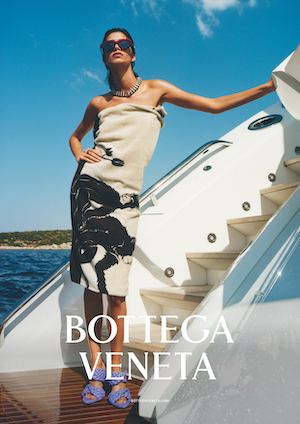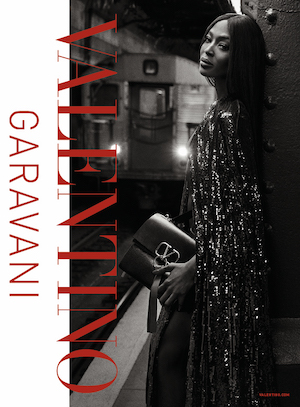Escape
Croatia
A Truly European Getaway!
August 16, 2017
Situated along the Adriatic coast, with its pristine beaches and luscious landscape, Croatia has long been considered one of the most beautiful destinations in Europe. Composed of eight regions, each varied in their landscape, gastronomy, and recreational facilities, the country has something for everyone. So whether you are looking to embark on a cultural journey through medieval villages, a relaxing getaway by the beach, or a fun-filled vacation, Croatia is the place to go!!
Zagreb
The largest city in Croatia, Zagreb is now competing with Budapest and Prague as a popular tourist destination. History buffs will enjoy the numerous museums and galleries. With more museums per square foot than any other city in the world, Zagreb is often referred to as a city of museums.
The city is divided in three, the first being the upper town – the thousand-year-old Gornji Grad. Here you will find the Presidential Palace, the historic church of St. Mark's, the Croatian parliament, as well as museums and galleries, all set in cobbled streets lit by gas lamps. The lower town, the 19th century Donji Grad, is home to many shops, restaurants, cafés, theaters, and parks. Finally, there is the modern post-war (WWII) Novi Zagreb (New Zagreb) area filled with high-rise buildings. The city offers rich cultural and artistic enjoyment. There are about 20 permanent or seasonal theaters and stages, as well as the many domestic and international events which are hosted each year. In addition, Zagreb features a number of modern shops, diversified restaurants, as well as sports and recreation facilities.
Islands
With 1185 islands in Croatia, from remote fishing outposts to harbors dotted with massive yachts, Croatian islands display nearly every style you can imagine; each with a life of its own, a spirit of its own, and a message of its own. Although only 66 of these are actually inhabited, there are still numerous varied destinations to choose from. Among the choices are the Kornati islands. A masterpiece of nature, they truly stand out, while the small Sibenik islands such as Krapanj are the best options for those seeking a quiet, secluded getaway. Hvar, near Split, is the sunniest of all the islands and is also home to the oldest theater in Europe. Famous for its two-kilometer-long sandy beach, the island of Brac is one that is not to be missed, especially if you plan on hitting the waves and getting some surfing time in. Next to the island of Vis is Modra Spilja, Blue Grotto – a natural phenomenon of the Adriatic. Further south is the wooded island of Korcula, the home of Marco Polo as well as the green Elaphite islands close to Dubrovnik.
National Parks
There are eight national parks in Croatia, all unique in their natural beauty and tranquility. Of the eight, seven are located close to the sea with the eighth less than 200km away from the coast. A popular national park is the Island group Brijuni. Situated outside the West coast of Istria, it consists of three larger and twelve smaller islands. Due to its favorable geographic position and low terrain, Brijuni Islands are known for their mild climate, attracting those in search of some natural beauty and tranquility. The archipelago has been inhabited since Roman and Byzantine times; the ruins of Roman villas and the numerous remains of other buildings and decorative mosaics speak of their presence and add to the attraction of the archipelago. National Park Brijuni includes the surrounding sea with exceptionally preserved sea fauna.
The Kornati Islands National Park is another must-visit destination in Croatia. Beautiful nature, a network of countless islands and islets, and of course, the magnificent sea, make the Kornati Islands, the largest archipelago in the Adriatic (147 islands), a true promise land for boaters and yachting enthusiasts. The Kornati area is also one of the richest fishing grounds in the Adriatic; the islands have a number of small coves and wild harbors, where boaters may take shelter and dock. The islands are a unique pleasure and experience to all those who are keen on bathing in the crystal-clear sea and to those who appreciate peacefulness and tranquility, but are also enthusiastic about eco-tourism.
If adventure is what you are after, head to Paklenica National Park, one of the most attractive natural phenomena in Croatia. Paklenica is a challenge to numerous mountaineers and has become a world-renowned mountaineering attraction. National Parks North Velebit and Risnjak are also attractive for mountaineers, in addition to speleologists, botanists, and alpinists. Picturesque National Park Mljet, on the other hand, is famous for its two lakes – Big Lake and Small Lake.
Istra
With its typical architectural Venetian buildings, churches, bell towers, coast and beaches, Istra is a must-see destination for all tourists traveling to Croatia. Comprised of two sections, Blue Istra being the eastern and western coastal regions, while Green Istra refers to the inland region, the Istrian peninsula is located in the northern part of the Adriatic Sea, between the Gulf of Trieste and the Gulf of Kvarner. Blue Istra, with its breathtaking sea, pristine beaches, and numerous bays, is great for a number of sporting activities. Here you will also find the Amphitheatre in Pula which dates back to the first century. Once used as a theater for gladiator fights, today it functions as a stage for various cultural events and concerts. Blue Istra is also home to the national park Brijuni, the breathtaking archipelago. If a quiet vacation in the heart of medieval villages surrounded by greenery and the Croatian culture sounds more like your style, head to Green Istra. Stay in a farmhouse or tavern and discover the culture, customs, and typical foods of the Istrian inland. Immerse yourself in the charm of Green Istria by visiting small cities and medieval villages located on the hilltops. These small cities are bordered by antique walls of cities and towers with their breathtaking views. By simply strolling through the suburbs you will feel as though you have embarked on a magical journey through time.
Cuisine
The Croatian cuisine is specific for every region, reflecting the country's geography, history, and culture. A single type of Croatian cuisine does not exist, because each region has its own, unique cuisine. The northern and southern areas of the Adriatic are characterized by differences in taste and preparation of more Mediterranean foods. The tradition of grilling and roasting fish and delicacies of the sea has been passed from generation to generation. In the north of Croatia however, Austro-Hungarian culinary influences are more evident. Dalmatia and the coastal areas indulge in fish, sea fruits, meat, and lamb dishes. In the northern parts a regional specialty not to be missed is visovacka begavica – lamb cooked in sheep's milk – and mlinci, which are flat, slightly sour dumplings that are served with turkey and noodles with truffles from the forest.
Not to be forgotten is the wine! Wine growing is an industry in Croatia with centuries of traditions and know-how behind it. The most renowned Croatian red wines along the Adriatic coast and on the islands are teran, merlot, kabernet, opolo, plavac, dingac, and postup, and for lovers of white wine, indulge in favorites such as malvazija, posip, pinot, kujundzusa, zlahtina, and muskat.
When to Go
Croatia attracts the most tourists between the months of April and September. If you decide to visit in April you will have the opportunity to experience Zagreb’s cultural season in full swing and enjoy warm clear skies although the weather will still be too cold for swimming. If you are up for outdoor activities, May and June is the time to visit. July and August are the most expensive months to visit Croatia as the tourist season swings into gear, although you will enjoy the advantages of extra boat lines to whisk you away to the islands as well as guided tours and excursions. September is probably the optimum month since by then the crowds have thinned out, off-season rates apply, and fruits such as figs and grapes are abundant.































